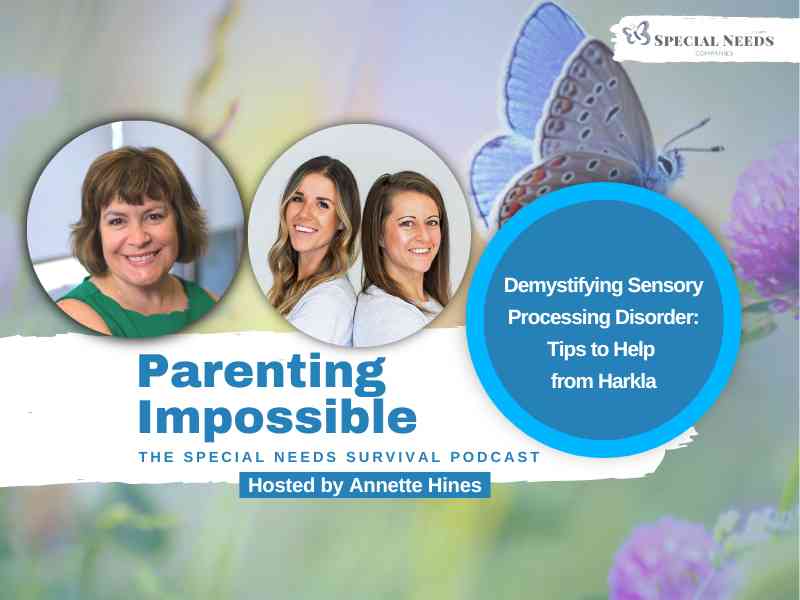Sensory Processing Disorder (SPD) can be a challenging and often misunderstood condition. As a condition that affects how our bodies and brains interpret sensory information, it can present a variety of difficulties for children and their families. In our recent podcast episode, we had the privilege of discussing this complex issue with certified occupational therapist assistants (CODA)s, Rachel Harrington and Jessica Hill, founders of Harkla Co in Boise, ID.
Rachel and Jessica provided us with an in-depth look at the intricate process of how our bodies and brains decipher eight senses, including the five common ones (sight, smell, taste, touch, and hearing), and the three hidden ones (proprioception, vestibular, and interception). They shared invaluable insights into the challenges that can arise when this process hits a snag, a condition known as Sensory Processing Disorder.
Sensory Processing Disorder (SPD) is not simply about being sensitive to certain textures or sounds. It involves challenges in how sensory information is received, processed, and responded to. Children with SPD may experience difficulties with motor skills, social interactions, learning, and even behavior. But, as Rachel and Jessica emphasize, it’s crucial to understand that SPD is not a one-size-fits-all diagnosis. Each child may experience different sensory processing challenges.
One key topic covered during our discussion was the concept of sensory diets. A sensory diet is a carefully designed, personalized activity plan that provides the sensory input a person needs to stay focused and organized throughout the day. Sensory diets can involve a range of activities, from swinging and jumping to light touch and sound games. The aim is to meet a child’s specific sensory needs, helping them to better engage with their environment.
In addition to sensory diets, advocacy was another significant topic of discussion. Rachel and Jessica stressed the importance of parents and educators working together to create an environment that nurtures learning for children grappling with SPD. Advocacy can involve educating others about SPD, ensuring a child’s needs are met in school, and helping the child learn to advocate for themselves.
Wrapping up our enlightening conversation, we delved into the topic of supporting children with sensory needs. Clear, open communication between parents, educators, and professionals is paramount to ensure successful execution of sensory diet plans. Rachel and Jessica shared wisdom on how to connect with your child, set an exemplary standard in emotional regulation, and even provided listeners with a sensory checklist tool to aid in understanding a child’s sensory preferences. You can find related guidance for helping children develop coping mechanisms in these episodes:
Helping Neurodivergent Children Accomplish What Seems Impossible with Suzy Im
The Benefits of Virtual Reality and Other Technologies for Children with Neurodiversity
In summary, our discussion with Rachel Harrington and Jessica Hill served as a reminder that dealing with Sensory Processing Disorder is about taking one step at a time. By understanding the complexities of SPD, implementing sensory diets, advocating for our children, and providing the necessary support, we can create an environment that enables children with SPD to thrive.
Connect with Rachel and Jessica at Harkla:
Website: harkla.co
Facebook: @harklaproducts
Instagram: @harkla_family @allthingssensorypodcast
YouTube: @HarklaFamily

